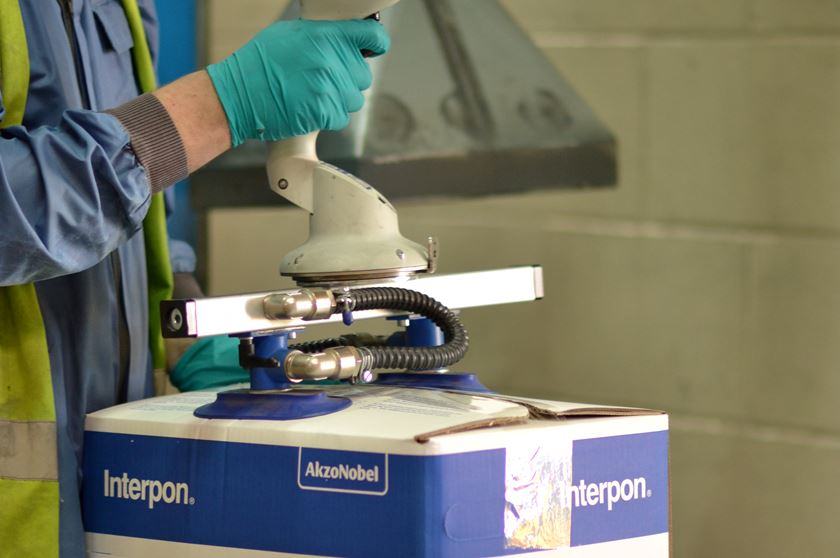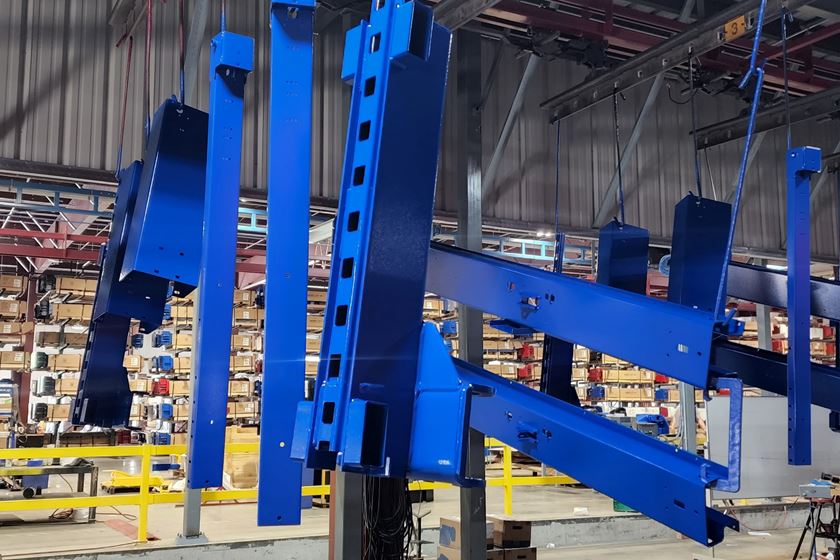How to Test Coatings with Nanoindentation
Fischer Technology’s Rahul Nair explains the benefits of using nanoindentation to measure a coating’s mechanical properties.
#basics #measurement-testing
Q. Our customer has asked us to test the mechanical properties of the coatings we apply.
How can we do this, and why is this important?
A. Nanoindentation measures a coating’s mechanical properties with very specific and controlled depth penetration into the coating. A loose rule of thumb is to control the depth of indentation to approximately one-tenth the thickness of the coating to eliminate effects from the material beneath it. Traditional testing using Rockwell and Vickers indentation testers cannot control the indentation to these shallow depths.
Featured Content
Nanoindentation also:
- Provides more information than just “hardness.” The true performance of a coating is determined by more than just a hardness value. Nanoindentation testing measures other properties like elastic modulus, fracture toughness and creep, and additional parameters critical to a coating’s performance. A complete understanding of all mechanical properties is crucial to understanding the performance of a coating.
- Can be used in quality control. The fundamental theories behind nanoindentation were established in the early 1990s and form the basis for the nanoindentation standard ISO 14577. ISO 17025 standards are also available. Modern nanoindentation instruments may be calibrated to traceable standards. This traceability is important for quality assurance across multiple production sites, and it is critical should warranty and coating failure claims need arbitration.
- Is not subjective. Traditional and old-school test methods, such as pencil hardness and spring-loaded mechanical testers, are subjective in nature, and therefore can lead to product inconsistency, potential coating failures and warranty issues. Rockwell and Vickers hardness testers rely on a visual interpretation of indentation sizes and are therefore also prone to subjectivity. Nanoindentation is a consistent measure that is not subjective.
- Can measure both hard and soft coatings. Nanoindentation instruments are capable of measuring the mechanical properties of materials as soft as rubber to as hard as ceramic. The technique relies on the measured penetration depth and not a visual observation of the indent, so measurements can be made on very thin coatings and highly elastic materials. Coatings benefitting from this type of testing include paints, powder coatings, electroplated layers, anodic coatings, and hard and ceramic coatings (such as titanium nitride, titanium aluminium nitride and diamond-like carbon).
Here are the top five features to look for in nanoindentation instrumentation:
- Ease of use. The first commercial nanoindentation instrument was produced in 1985, but early instruments were cumbersome to use. Hardware and software of the current generation of nanoindentation instruments has evolved to address these concerns. A simple-to-use instrument allows multiple groups to share the same unit and does not require a specialist to operate, minimizing training demands. This means significant savings for the company. It also allows for more frequent testing.
- Robustness and simple sample setup. A modern, robust nanoindenter minimizes the possibility of crashes from user mistakes. It also lends itself to simple and fast sample preparation. Certain instruments have special design features that specifically protect the indenter tip but allow for fast measurements. Real-time feedback on a coating’s performance properties provides improved quality control (QC) and therefore limits costly rework, poor quality and potential warranty issues. Quality assurance (QA) and incoming inspection departments also benefit from this technology, allowing quick determination of whether incoming parts and materials meet required performance specifications.
- Fast data measurement and processing time. Along with fast and simple sample preparation, look for nanoindenters with quick data acquisition and fully automated processing. Older instruments required lengthier setup and user intervention, and thermal drift needed to be manually calculated. The latest nanoindentation instruments are fully automated with mature operating software. Intelligent algorithms can help the instrument detect surfaces accurately.
- Stability in a “normal” environment. Nanoindentation is a precise measurement, and all instruments of this type require a somewhat stable environment for both vibration and temperature. Some instruments require a true laboratory setting, but other instruments are available that are capable of operating in less-controlled environments. Choose the type of instrument that works best for your environment.]
- Ergonomic design. Three main criteria influence the optimal instrument design for various applications and environments. Taking into consideration the factors of space, range of motion and electronics can allow for testing of components of different geometries in crowded labs as well as near line production. When space is at a premium, seek high-performance units of a smaller physical size that can work in “normal” environments. Some nanoindentation instruments feature an open layout with a large range of motion in X, Y and Z stages. Finally, integrated electronics minimize losses and noise due to long cables.
Rahul Nair is a product specialist at Fischer Technology Inc. Visit fischer-technology.com.
RELATED CONTENT
-
Drivers of Change
Is your metal finishing software ready for an upgrade?
-
A Current Affair: Examining the "No Amperage" Phenomenon
If you are performing a coating process that requires the use of a rectifier, you may have experienced the "no amperage" problem. Here's a look at the phenomenon and some solutions…
-
Improving Transfer Efficiencies in Coating Operations
There are many methods for addressing electrostatic grounding in metal painting processes, and Tim Ulshafer from Mueller Electric says the best method for your process is a simple and worthwhile exercise.



















